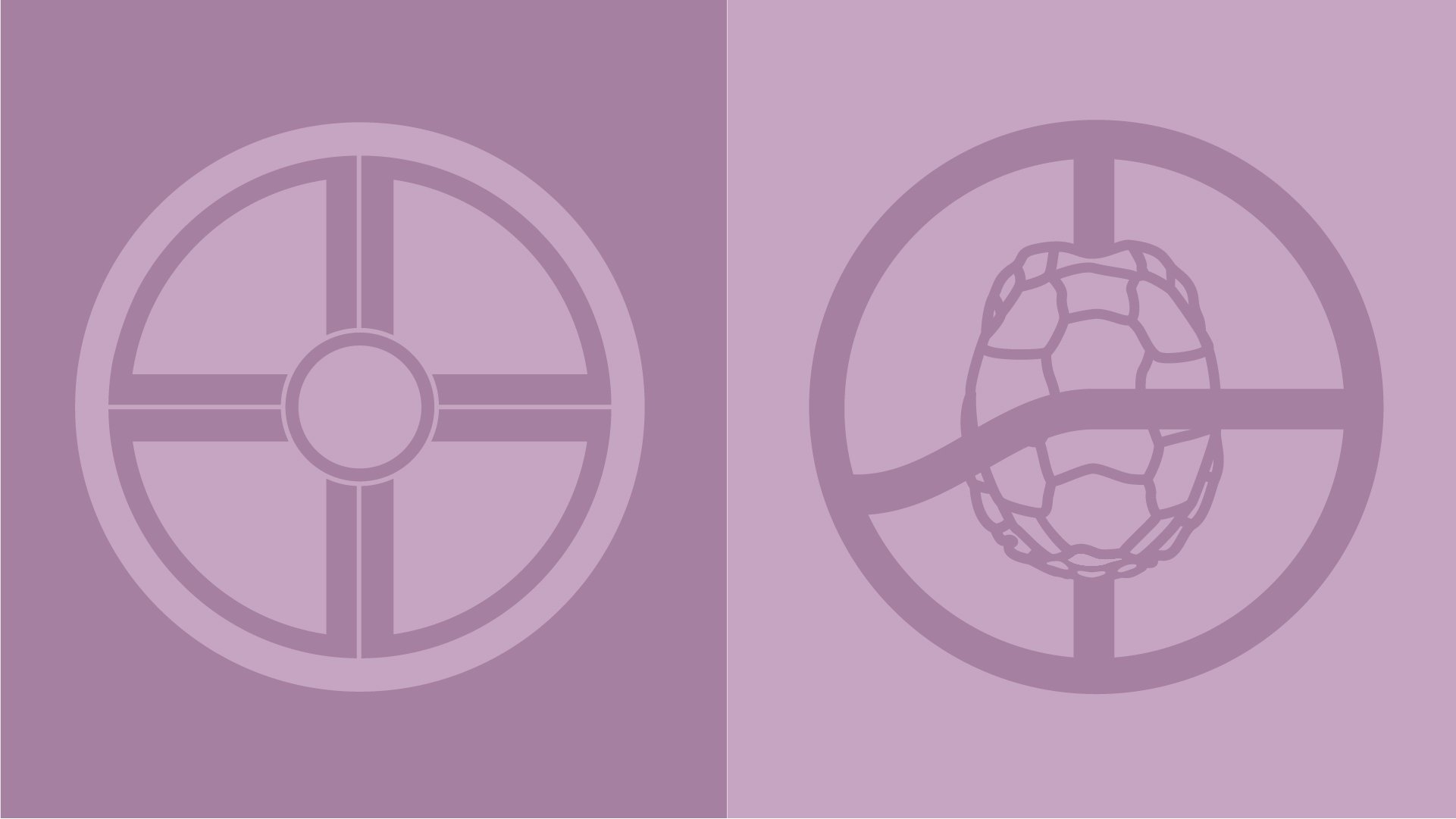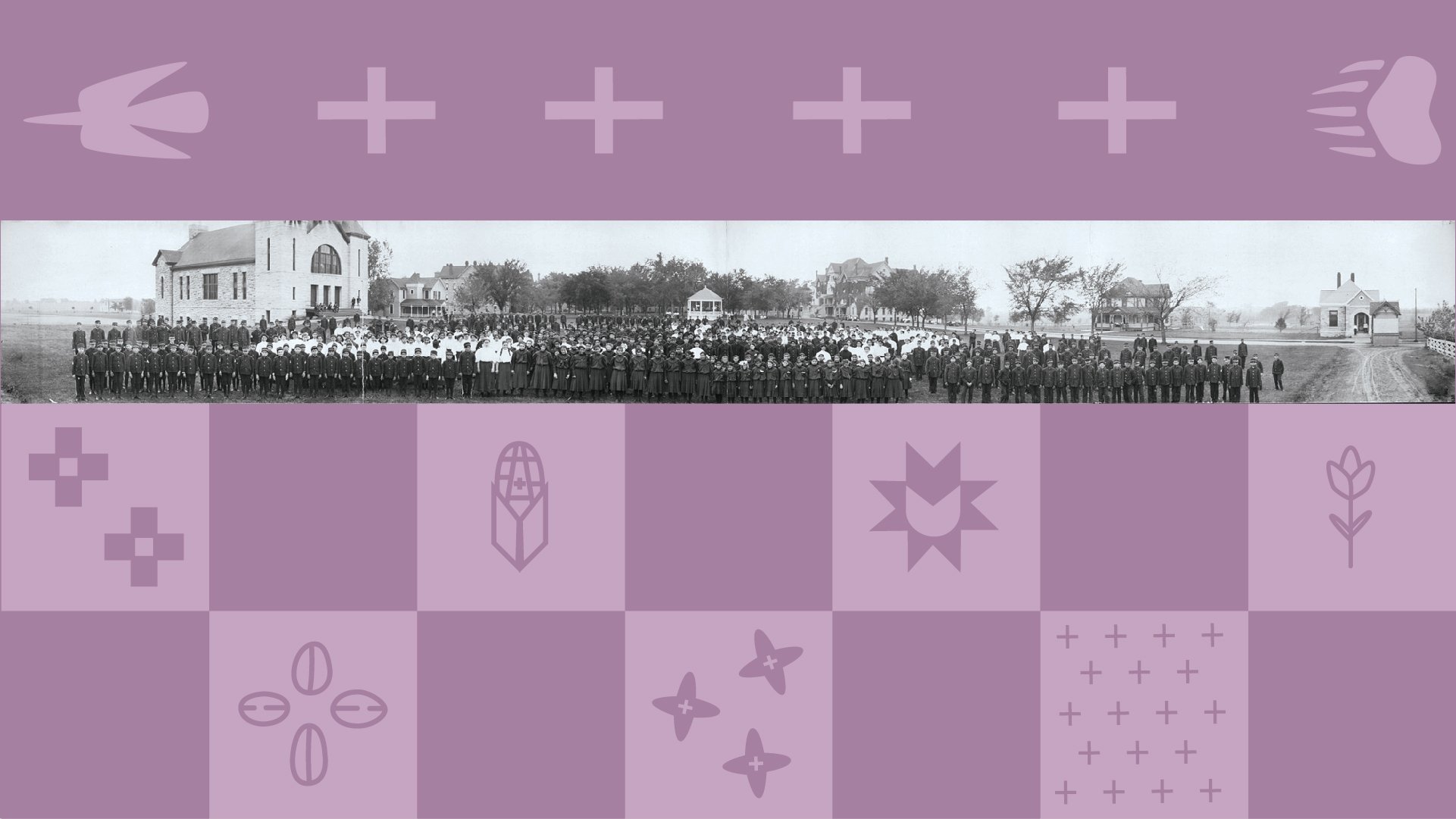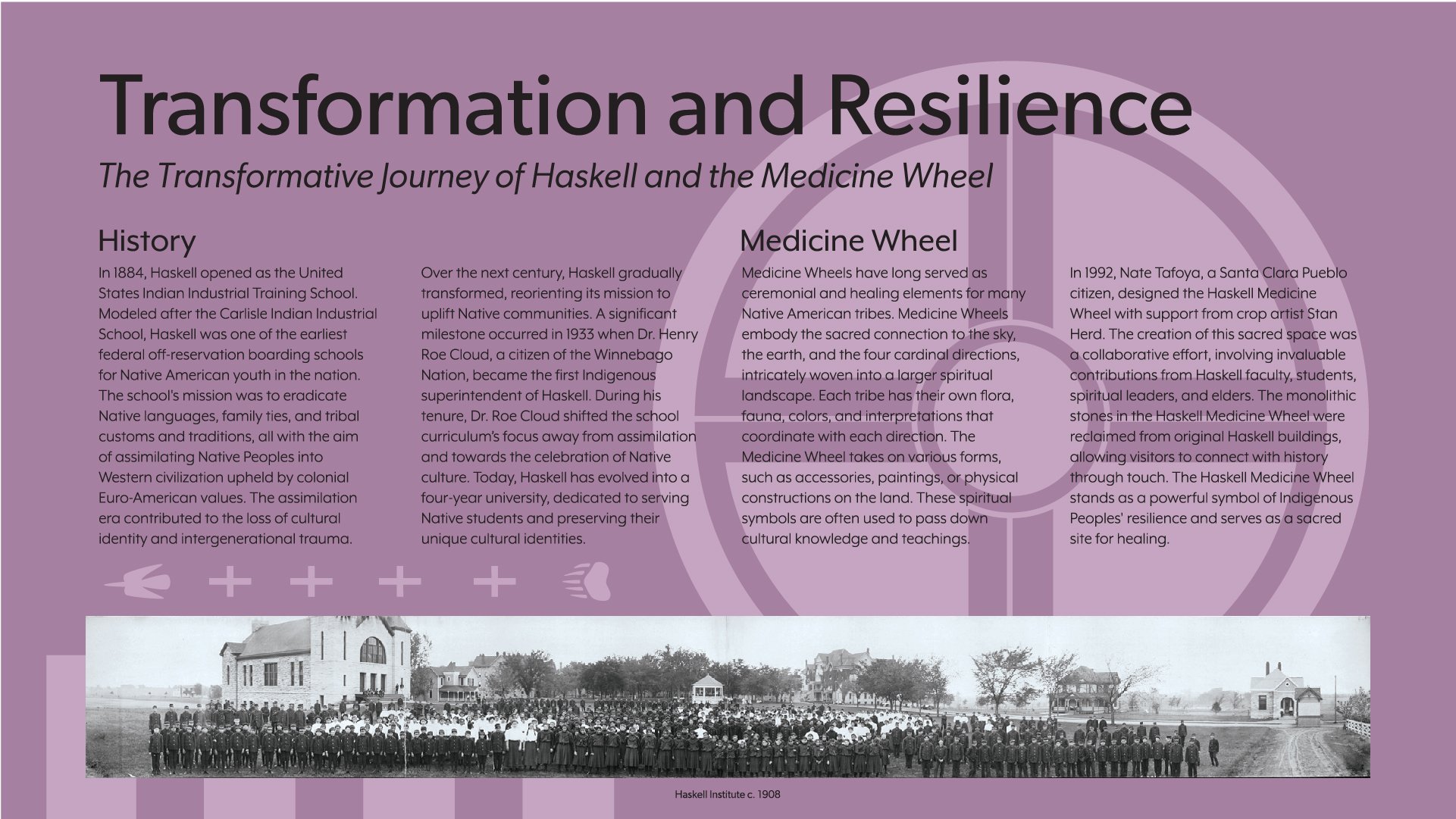
It was an honor to collaborate with the lead student researcher from Haskell Greenhouse on this interpretive signage project. We meticulously curated content to provide a foundational understanding of intricate Indigenous connections to the ever-evolving Haskell Wetlands and Woodlands for students, community members, and visitors alike. From in-depth research to thoughtful Indigenous graphic design, this project reflects my dedication and passion to bringing together education and Indigenous design. Stay tuned as we move into the production phase of our project!
Haskell
From Wetlands to Woodlands
This sign will be installed near the historic Haskell Farm Road, south of Haskell Indian Nations University campus. Its green color palette will seamlessly blend with the surrounding environment throughout all seasons, offering a refreshing pop of color during the long Kansas winter. Every embellishment has been carefully designed to celebrate Indigenous cultures and honor the integration of elements from the former buildings into the natural landscape. For example, the rectangles represent the monolithic stones in the Haskell Medicine Wheel that were reclaimed from original Haskell buildings.

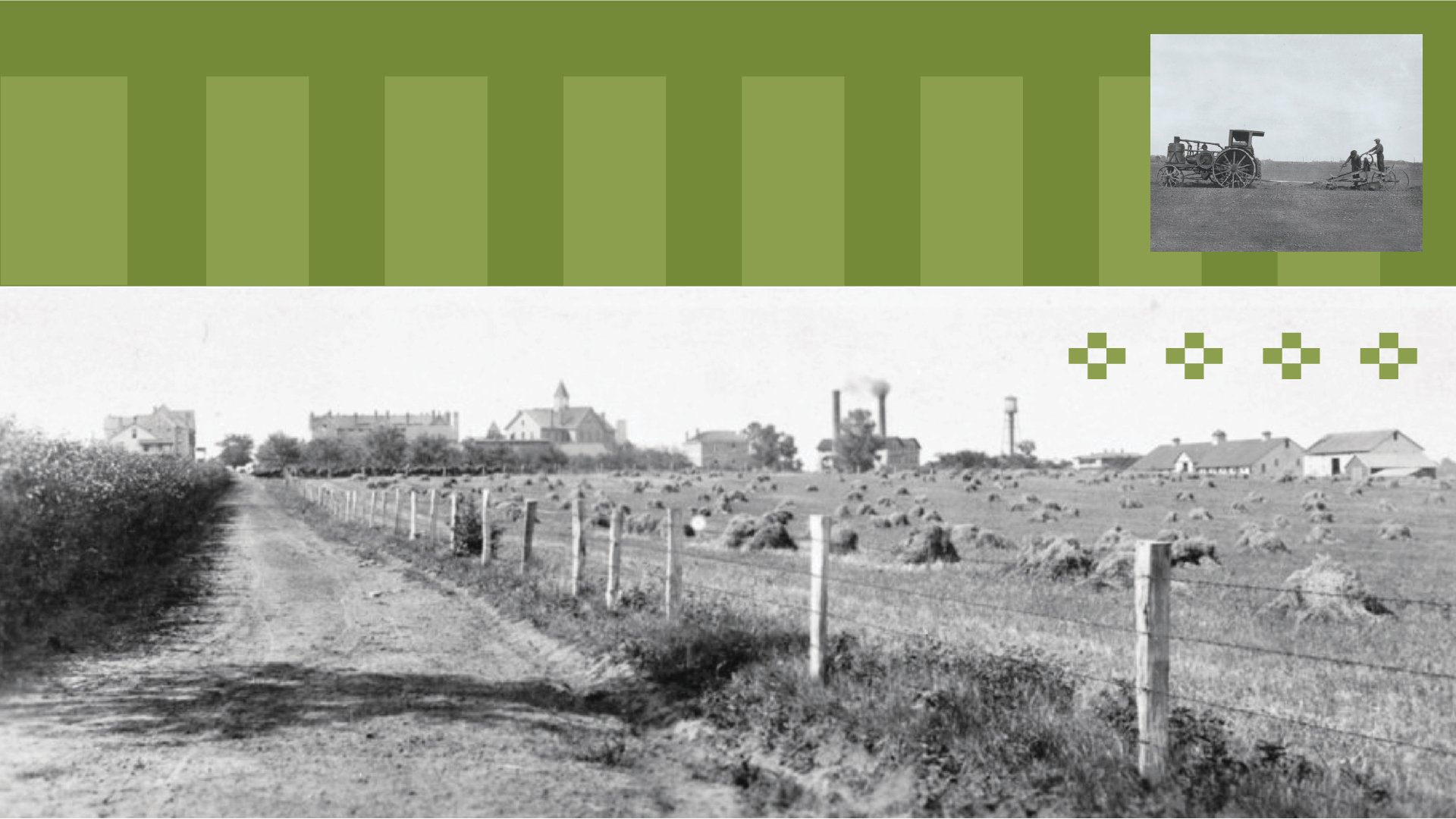

Past & Present
This sign will be installed on the 31st street roadbed, extending further south of the Haskell Indian Nations University campus. Its blue color palette harmonizes with the natural beauty of the wetlands. In addition to conducting research, writing content, designing layout, and editing photos, I also crafted embellishments on this sign that feature symbolic representations of the Plains Native waterbird and muskrat.
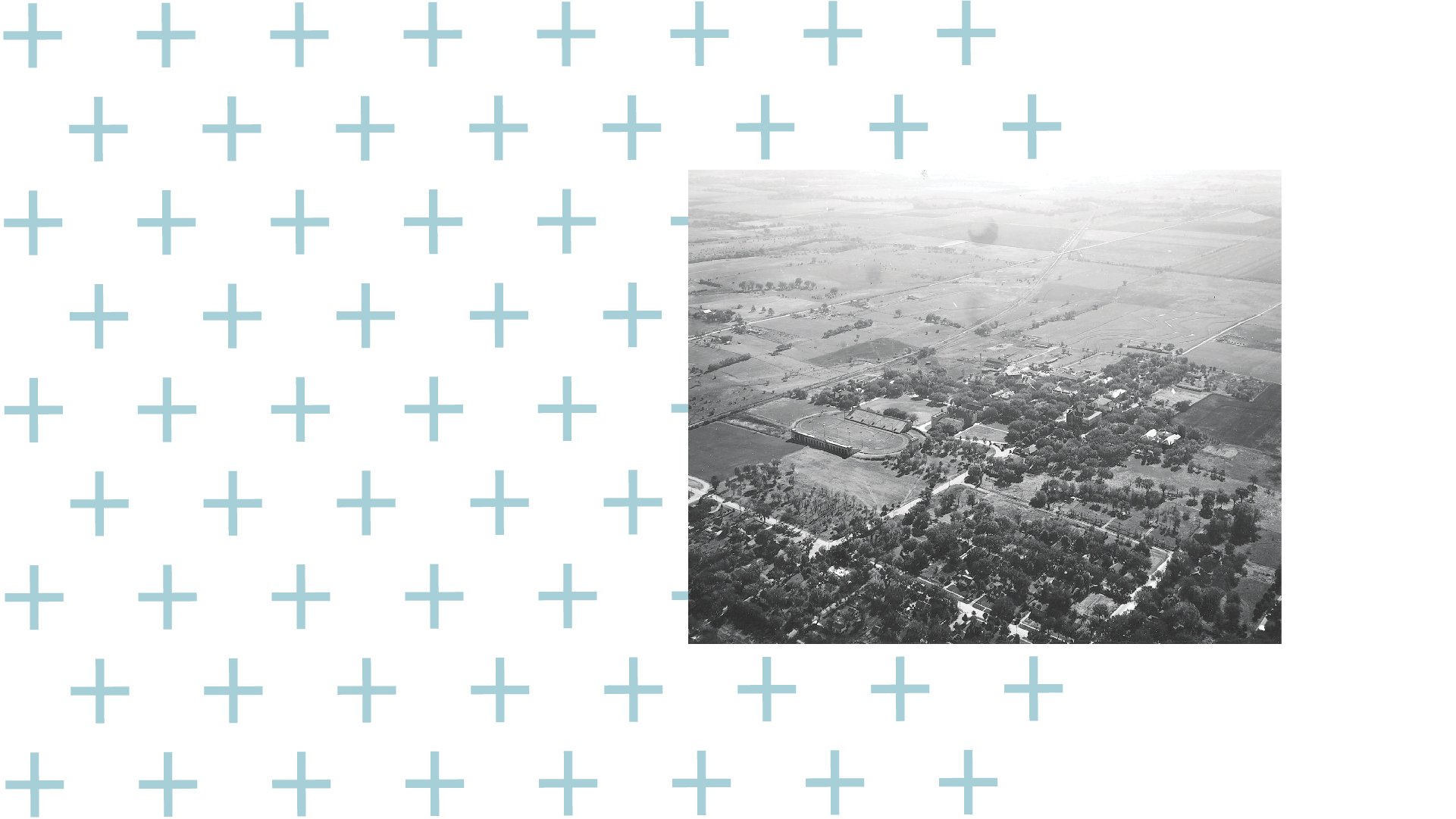
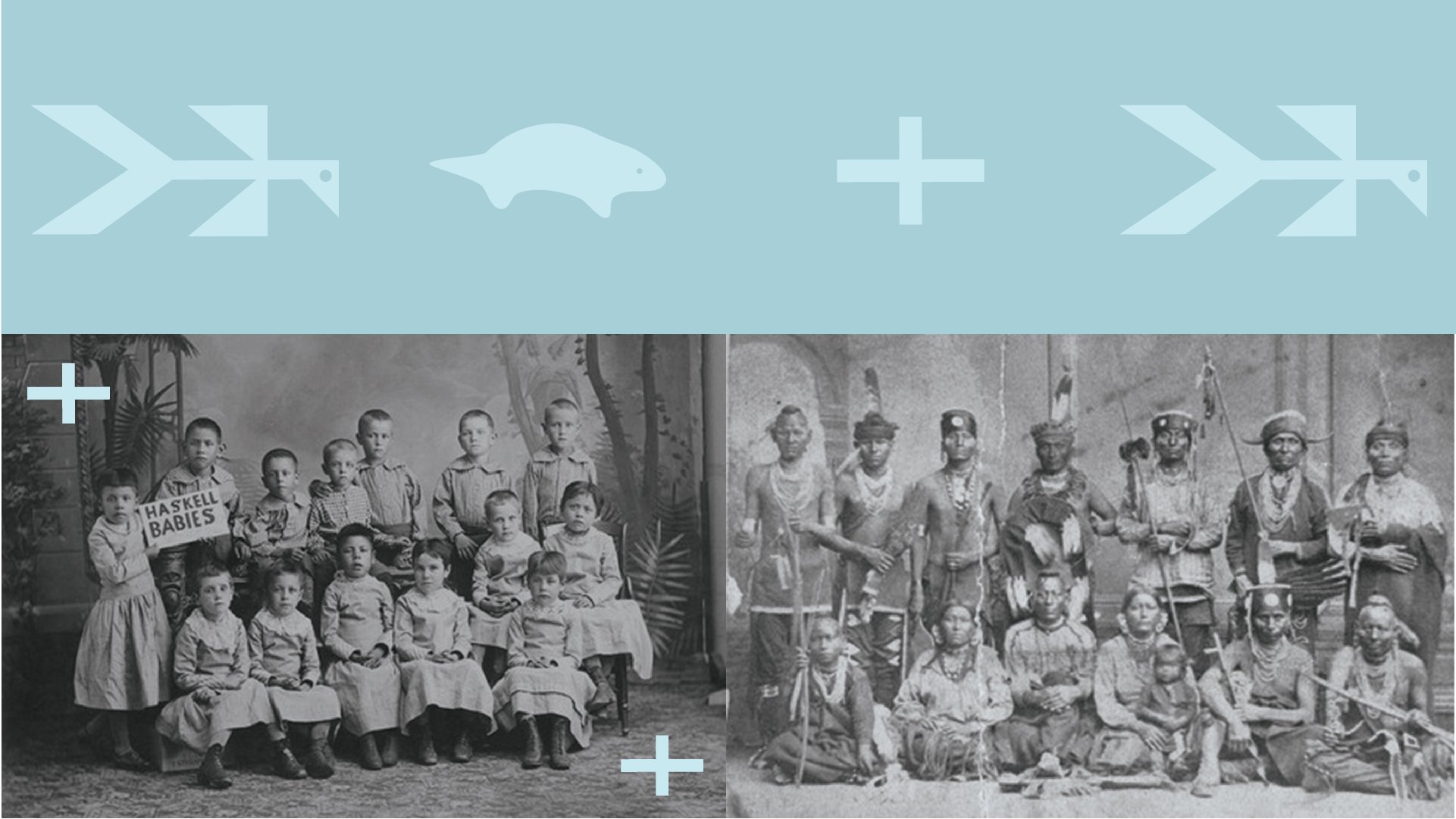
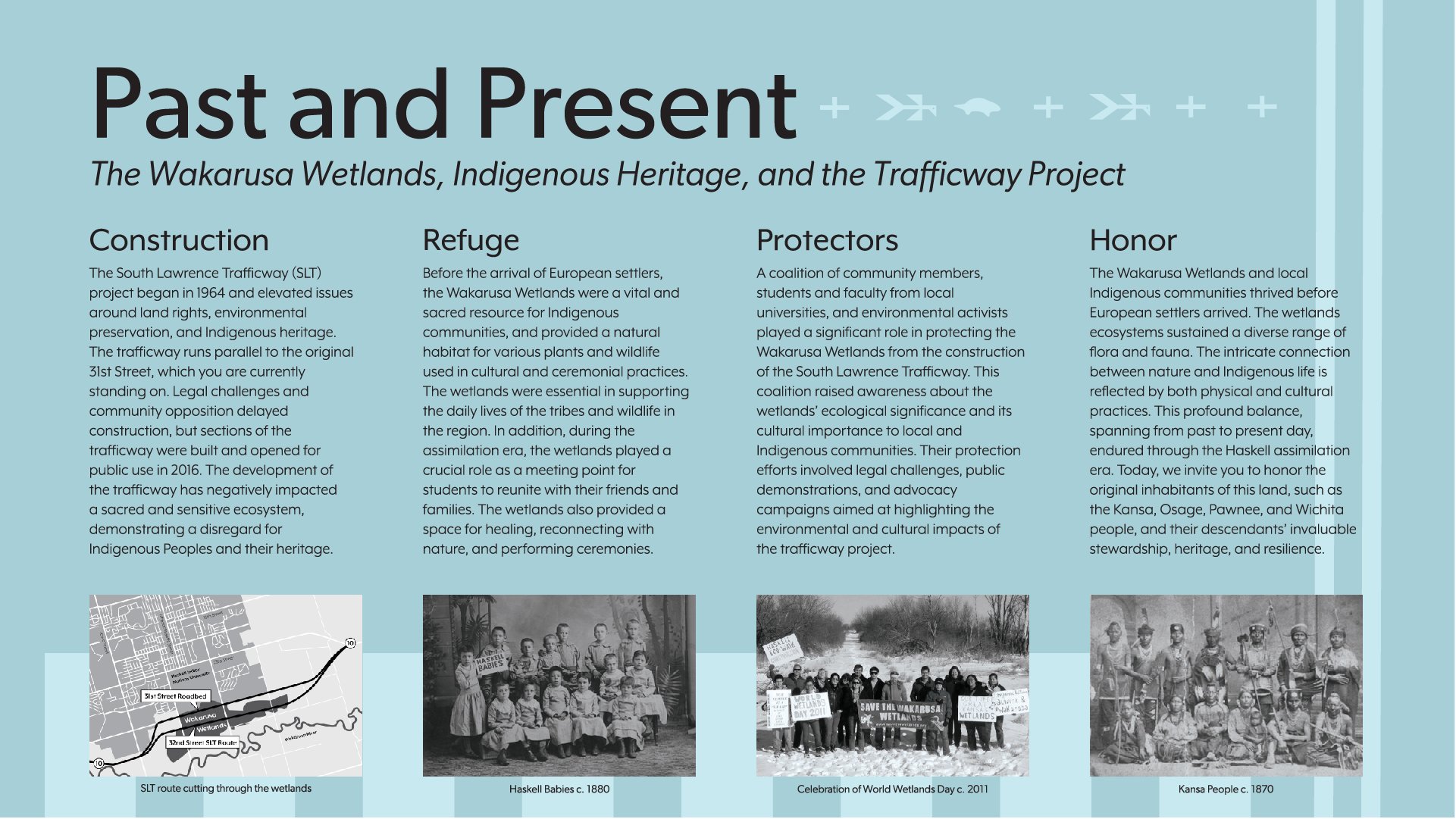
Transformation & Resilience
This sign will be installed adjacent to the Haskell Medicine Wheel, where its purple color palette pays homage to the university's iconic colors. Adorned with symbolic embellishments, it includes a simplified representation of the original Haskell Medicine Wheel design, featuring the wheel itself, along with representations of the Southwest waterbird, bear paw, and monolithic stones. Notably, the checkered pattern serves as a precursor, showcasing icons that will later be utilized in the redesign of a historic crop rotation map for the entrance sign.
